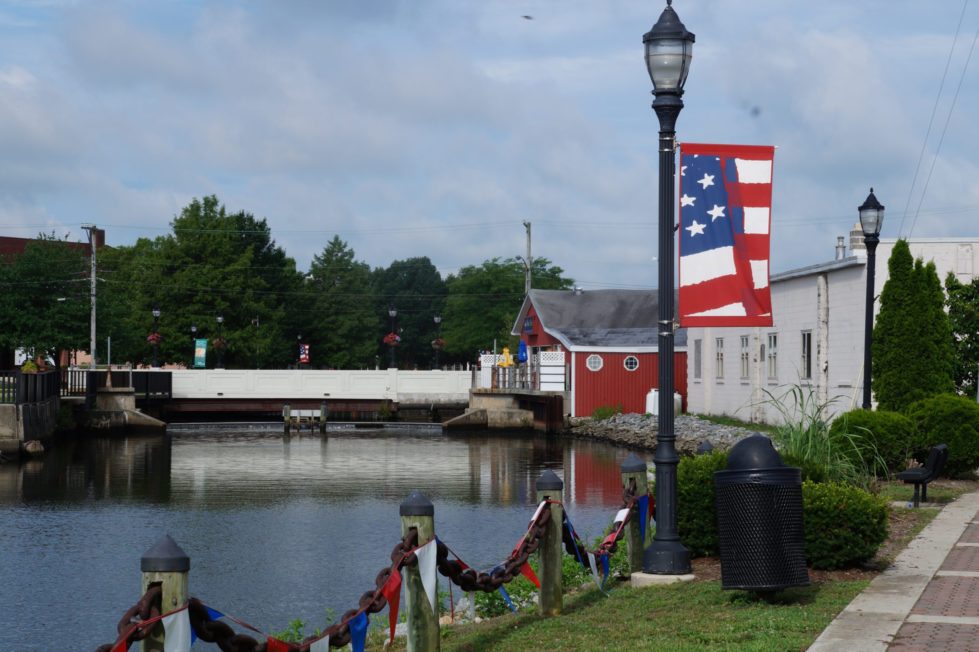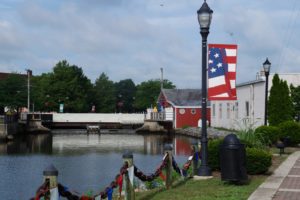by Terry Rogers
In January, Milford residents were asked to complete a National Community Survey, a questionnaire created by a nationally benchmarked survey company designed to gauge their satisfaction with municipal services while also learning what residents want to see when it comes to new initiatives. This survey is used by the City of Milford to develop their Strategic Plan.
“We mailed a random sample to 2,400 households in all four wards of the city,” Melody Barger, University of Delaware Fellow, said. “We also sent postcards advertising an online copy as well as a paper copy of the questionnaire. We also put a link on the website to allow other residents to participate. We received 432 responses, 286 online and 146 paper, a response rate of 19 percent. The desired response rate is 15 percent and three percent of mailings were returned due to bad addresses.”
Barger explained that the survey looked at ten factors throughout the city, including economy, mobility, community design, utilities, safety, natural environment, parks and recreation, health and wellness, education arts and culture, inclusivity, and engagement. She explained that almost every response showed a downtown since the last survey was completed in 2019, but all results were consistent with national benchmarks.
As for the overall feeling of safety in Milford, only 63 percent of those who responded felt Milford was safe while 76 percent rated police services good, down from 82 percent in 2019. Only 67 percent rated emergency preparedness good or excellent while 68 percent rated fire prevention as good or excellent, down from 75 percent in 2019. In 2019, 94 percent felt fire services were good or excellent and that dropped to 88 percent this year. In addition, crime prevention was rated at 61 percent, down from 65 percent and only 84 percent felt safe in the downtown commercial area of the town, down from 87 percent.
“Overall economic health in Milford was rated good or excellent by 46 percent, but down from 51 percent since 2019,” Barger said. “Milford as a place to work was rated 57 percent, up from 55 percent in 2019. Economic development was rated good to excellent by 43%, just down from 49% in 2019. And the economic impact in the future was considered to be somewhat or very positive by 24%, which is down by 30%. And I think that we can safely say this is related to the pandemic. employment opportunities were considered very good or excellent by 43%, which is up from 34% A good improvement in the overall quality of business and service establishments were considered good or excellent by 55%, slightly down from 57% in 2019, and variety and service and business establishments was considered good or excellent by 40% 43%, which was a little lower than the benchmark in terms of mobility and infrastructure.:
Utilities were also ranked in the survey with 74 percent believing garbage collection, 43 percent affordable high speed internet access, 50 percent drinking water, 75 percent sewer, 62 percent stormwater management and 66 percent power rated good or excellent. Drinking water improved from 45 percent in 2019. Only 48 percent of respondents felt Milford’s transportation system was good or excellent while only 61 percent felt the town was a good or excellent place to walk, a number that was down from 65 percent in 2019. Traffic flow was only considered good or excellent by 67 percent, up from 65 percent and ease of traveling by car was only good or excellent by 67 percent.
Only 38 percent felt there was good or excellent options in housing variety while only 31 percent found the availability of affordable housing good or excellent. These were both down from 2019. Only 39 percent found that Milford had good or excellent public places while only 56 percent felt there were good or excellent parks and recreation activities. The respondents also found fewer fitness opportunities, recreation opportunities, city parks, recreation programs or classes and recreation centers. However, walking trails improved by 10 percent since 2019.
“So we also asked in the NCS a couple of custom questions, which we discussed among staff, counsel, what we were interested in asking,” Barger said. “The answers to those interested in additional recreation access points along the Mispillion River were considered essential, important, by 65%. More outdoor public events and festivals by 72%. Organized tours like bike tours and birding 47%, shuttles to Slaughter Beach 41%, additional bike lanes 52% and quality of parks and recreation opportunities was 73%. When residents were asked how they thought about public art in Milford, most of them either liked it or wanted more so, I guess we need to get some more art. When residents were asked how important the following recreation opportunities were, parks and playgrounds, said 81% said they were essentially supportive of trails and pedestrian paths, 74% hardcourt sports, 57% turf and soft court sports, 52% swimming pool and splashpad, 57% indoor recreation, 78% skate park 38% and amphitheater 52%. And when residents were asked, how will they have support for a historic preservation ordinance 95% strongly or somewhat supported the ordinance.”
Mayor Archie Campbell asked if COVID may have been responsible for the lower ratings this year compared to 2019 and Barger stated that she was not sure. She pointed out it could be related to COVID, or it could be economic factors. She also explained that the benchmarks nationally were also lower than they were in 2019. Councilman Andy Fulton stated that if the benchmarks were lower nationwide, it was likely due to the pandemic.
When asked by Councilman Mike Boyle if the 432 were distributed evenly across the city, Barger explained that she was unsure of the exact number, but she recalled that one ward had a higher response than others. Based on the report she provided, 40 percent of the responses were from Ward 1, 28 percent from Ward 2, 19 percent from Ward 3 and 13 percent from Ward 4.
“This is 432 households,” Councilman Jason James said. “So the concern that although we’ve compared to the national benchmarks, but I’m thinking about Milford and I just don’t know if we have enough to really draw conclusions on because of the low participation. And I guess the key thing here is, to the citizens, is that participation is important because those who respond and those who speak and those who participate are the ones who get the initiatives or the things that they desire. It’s what gets the attention of council because those are the ones that are responding and speaking out. It made it because 432 people out of what over 11,000 asked for it. It is not a voice for the people, not the people who are silent. So really, we don’t know what the people want. We know what 432 households want.”
City Manager Mark Whitfield explained that this was designed to get a snapshot of how residents in Milford felt, but that the city would now hold community conversations in the various wards and get additional input from citizens. He did feel that this survey gave council a good snapshot of where the city is today compared to 2019. He even suggested going back to 2016 or 2017 to develop additional benchmarks.
“I agree with everyone,” Councilwoman Katrina Wilson said. “And as I’m sitting here, you know, my first thought was wow, we have a lot of work to do. Are we doing our job? You know, it’s not a great feeling to hear the percentages and how they dropped and a perception of our citizens and the lack of participation. That’s really not a good feeling.”
Sarah Bluhm, Economic Development and Community Engagement Administrator pointed out that there were just over 450 responses to the 2019 survey as she recalled. Whitfield commended Barger and Bluhm for their work in putting the statistics together for council’s information.
Share this Post




